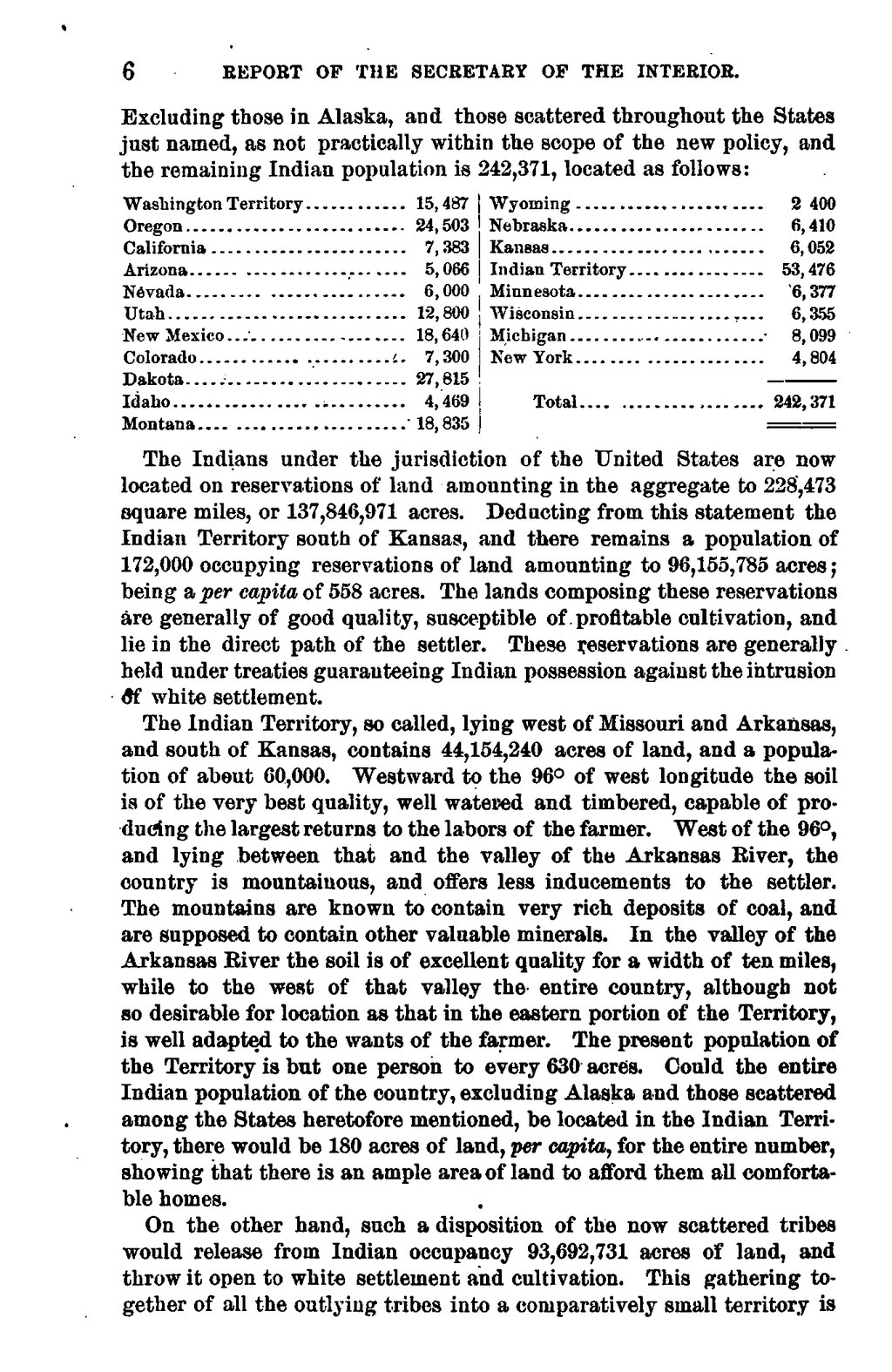Excluding those in Alaska, and those scattered throughout the States just named, as not practically within the scope of the new policy, and the remaining Indian population is 242,371, located as follows:
| Washington Territory | 15, 487 |
| Oregon | 24, 503 |
| California | 7,383 |
| Arizona | 5, 066 |
| Nevada | 6,000 |
| Utah | 12, 800 |
| New Mexico | 18, 640 |
| Colorado | 7,300 |
| Dakota | 27,815 |
| Idaho | 4, 469 |
| Montana | 18, 835 |
| Wyoming | 2 400 |
| Nebraska | 6, 410 |
| Kansas | 6, 052 |
| Indian Territory | 53, 476 |
| Minnesota | 6, 377 |
| Wisconsin | 6, 3.55 |
| Michigan | 8, 099 |
| New York | 4,804 |
| Total | 242, 371 |
The Indians under the jurisdiction of the United States are now located on reservations of land amounting in the aggregate to 228,473 square miles, or 137,846 acres. Deducting from this statement the Indian Territory south of Kansas, and there remains a population of 172,000 occupying reservations of land amounting to 96,155,785 acres; being a per capita of 558 acres. The lands composing these reservations are generally of good quality, susceptible of.profitable cultivation, and lie in the direct path of the settler. These reservations are generally held under treaties guaranteeing Indian possession against the intrusion of white settlement.
The Indian Territory, so called, lying west of Missouri and Arkansas and south of Kansas, contains 44,154,240 acres of land, and a population of about 60,000. Westward to the 96° of west longitude the soil is of the very best quality, well watered and timbered capable of producing the largest returns to the labors of the farmer. West of the 96°, and lying between that and the valley of the Arkansas River, the country is mountainous, and offers less inducements to the settler. The mountains are known to contain very rich deposits of coal, and are supposed to contain other valuable minerals. In the valley of the Arkansas River the soil is of excellent quality for a width of ten miles while to the west of that valley the. entire country, although not so desirable for location as that in the eastern portion of the Territory, is well adapted. to the wants of the farmer. The present population of the Territory is but one person to every 630 acres. Could the entire Indian population of the country, excluding Alaska and those scattered among the States heretofore mentioned, be located in the Indian Territory, there would be 180 acres of land, per capita , for the entire number, showing that there is an ample area of land to afford them all comfortable homes.
On the other hand, such a disposition of the now scattered tribes would release from Indian occupancy 93,692,731 acres of land, and throw it open to white settlement and cultivation. This gathering together of all the outlying tribes into a comparatively small territory is
